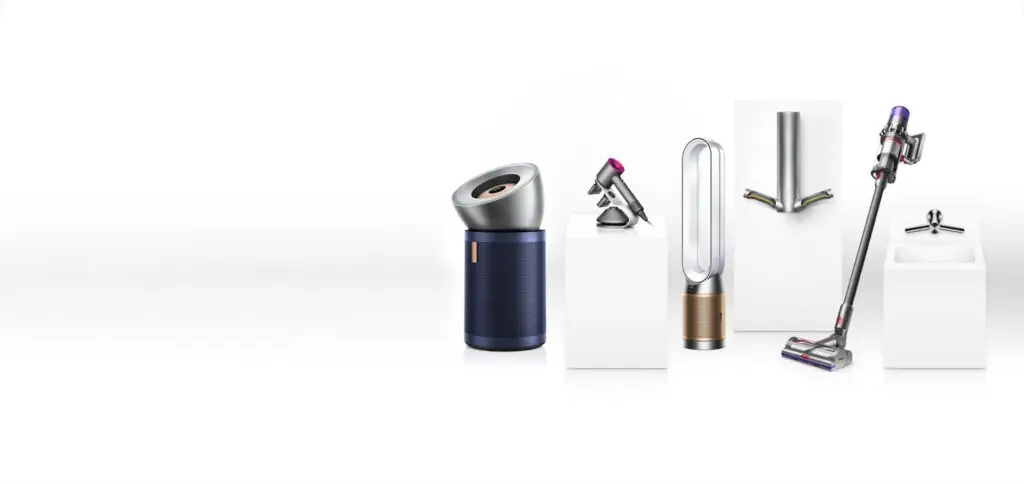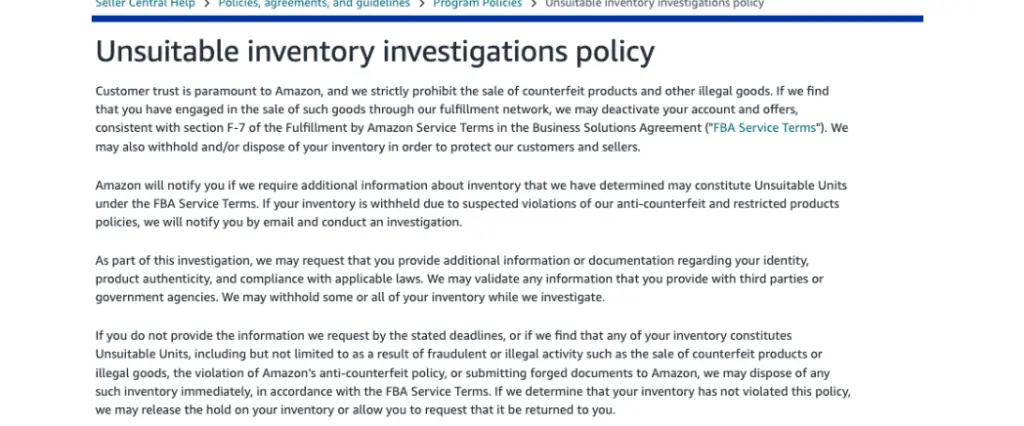Amazon Unsuitable Goods Suspensions: The Complete Guide to Protecting Your Account.
Introduction: The Dyson Vacuum That Started It All
It began with a Dyson vacuum — at least, that’s how we first noticed the storm that was about to hit.
At Riverbend Consulting, we’ve seen countless Amazon policy shifts over the years. Sellers come to us with suspensions for “inauthentic” goods, “counterfeit” claims, restricted product violations — you name it. We’ve navigated them all. But when the first wave of “unsuitable goods” suspensions landed in our inbox, it was something entirely new.
One of our early cases involved a seller who sourced genuine Dyson vacuums through what they believed was a reputable wholesale supplier. Their invoices were clean. They had no negative feedback, no returns, and no policy violations. Yet overnight, Amazon shut down their account with a short, baffling message:
“Your account has been suspended due to the sale of unsuitable goods.”
That was it. No list of ASINs. No explanation. Just a vague term that left the seller confused and panicked.
And it wasn’t just Dyson. Within weeks, we saw the same thing happen to sellers listing Ninja blenders, Avery office supplies, and other trusted name brands. None of these accounts had customer complaints, counterfeit claims, or even a warning from Amazon.
The question was clear: What exactly was Amazon calling ‘unsuitable goods,’ and why were good sellers being caught in the crossfire?

The Rise of the “ Amazon Unsuitable Goods” Suspension
Amazon’s enforcement policies have always evolved — but usually, we could spot a pattern. This was different.
In unsuitable goods cases:
There were no buyer complaints. That ruled out “inauthentic” suspensions triggered by customer feedback.
No counterfeit claims appeared. Amazon didn’t use the legal term “counterfeit,” which they usually do only when they have proof of fakes.
Invoices weren’t even reviewed. Accounts were suspended before sellers had a chance to present their documentation.
From Amazon’s perspective, this was a preemptive strike. They were cutting sellers off before products ever reached customers.
The Pattern We Discovered
After handling dozens of appeals, a consistent — and troubling — pattern emerged:
Shared Suppliers
Most of the suspended sellers were sourcing from the same small group of wholesalers.Direct-to-FBA Shipping
The goods never passed through the seller’s hands. Instead, suppliers shipped directly to Amazon’s fulfillment centers.Small, High-Demand Catalogs
These suppliers didn’t carry a broad range of inventory. They specialized in a few branded ASINs that moved fast.Suspicious Shipping Origins
Amazon appeared to flag shipments based on warehouse addresses that had already been linked to problem inventory.Theft Concerns
In a few cases, Amazon hinted that the products might have been stolen before entering the supply chain.
The common denominator? Amazon didn’t trust the supplier — and instead of going after them, they suspended every seller tied to that inventory source.
What “Amazon Unsuitable Goods” Likely Means
Amazon hasn’t published an official definition. But based on hundreds of cases, we believe “unsuitable goods” is a catch-all term for inventory they suspect could be:
Counterfeit — fake products posing as real brands
Stolen — goods that entered the market through theft or diversion
Misrepresented knockoffs — low-quality items listed under genuine brand ASINs
The critical takeaway:
It doesn’t matter if you didn’t know. If you list it, you’re responsible.
The Direct-to-FBA Trap
For many sellers, the road to suspension started with a “time-saving” idea: skip inspection and have the supplier ship directly to Amazon.
This setup was often recommended in wholesale coaching programs. It saved money on double shipping. It meant less handling. And it seemed efficient.
But when things went wrong, sellers had no chance to catch a problem before Amazon did.
We had one client selling high-end hair styling tools retailing for $100. Without her knowledge, her supplier substituted $20 knockoffs. Amazon caught it. Her account was shut down permanently. She never even touched the products.
How Amazon Investigates Unsuitable Goods
Once flagged, Amazon launches an Unsuitable Inventory Investigation. Here’s what you can expect:
Immediate suspension of listings or your entire account.
Inventory lockdown — you can’t sell or remove the affected stock.
Document requests, usually including:
Proof of authenticity
Supplier contact info
Original invoices with chain of custody
ID verification
Miss the deadline or fail to prove legitimacy, and Amazon can destroy your inventory without paying you. They may also check your documents against third-party or government databases.
Even if you win your appeal, your goods may stay in limbo for weeks or months.
Private Label Sellers Aren’t Safe
While most cases involve wholesale sellers, private label brands can get caught too — especially if they mix in wholesale flips or risky drop-shipped items.
One bad sourcing decision can put your entire brand in jeopardy.
Why This Crackdown Feels Different
Amazon isn’t waiting for proof from customers. They’re acting before goods even reach the buyer — using:
Shipping address matches to known problem suppliers
Brand-specific targeting
Strict chain-of-custody demands most suppliers can’t meet
It’s a proactive — and unforgiving — enforcement strategy.
How to Protect Your Business
To avoid unsuitable goods flags:
Don’t mix models — Keep private label separate from wholesale flips.
Inspect inventory before it reaches Amazon, especially new ASINs.
Vet suppliers like you’re auditing them.
Look for red flags — Small batches of branded beauty tools, appliances, and office supplies are high-risk.
Demand proper documentation — GS1 barcodes, complete invoices, and written agreements.

How to Appeal an Amazon Unsuitable Goods Suspension
If you’ve been flagged:
Step 1: Gather Your Documents
Supplier invoices with full details
Supplier contact info
Shipping and packing slips
Chain-of-custody proof if possible
Step 2: Write a Specific Plan of Action (POA)
Include:
Root cause — Take responsibility and explain the issue
Corrective actions — What you’ve already done to fix it
Preventive measures — How you’ll stop it from happening again
Step 3: Submit in Seller Central
Go to Performance → Account Health → Performance Notifications → Appeal.
Step 4: Respond Quickly
Amazon may reply in 48 hours or take weeks. Be prompt and avoid resubmitting unless asked.
Supplier Vetting: Your Best Defense
Before doing business with a supplier:
Get a written agreement
Request real invoices, not spreadsheets
Research their warehouse address
Look for a broad catalog — not just risky brands
Check barcode and compliance standards
Place a test order and inspect personally
FAQs
Q: What triggers an unsuitable goods suspension?
A: Amazon flags goods they suspect are counterfeit, stolen, or tied to risky suppliers — often using shipping addresses and invoice verification.
Q: Does Amazon tell you what’s unsuitable?
A: No. Notices are vague by design.
Q: Can private label sellers be flagged?
A: Yes — especially if they add wholesale or drop-shipped goods.
Q: Can I appeal?
A: Yes, but you need a strong POA, proof of authenticity, and chain-of-custody documentation.
Prevention Checklist
✅ Vet every supplier thoroughly
✅ Inspect inventory before sending to FBA
✅ Avoid direct-to-FBA for unverified suppliers
✅ Keep private label accounts pure
✅ Maintain organized, verifiable documentation





